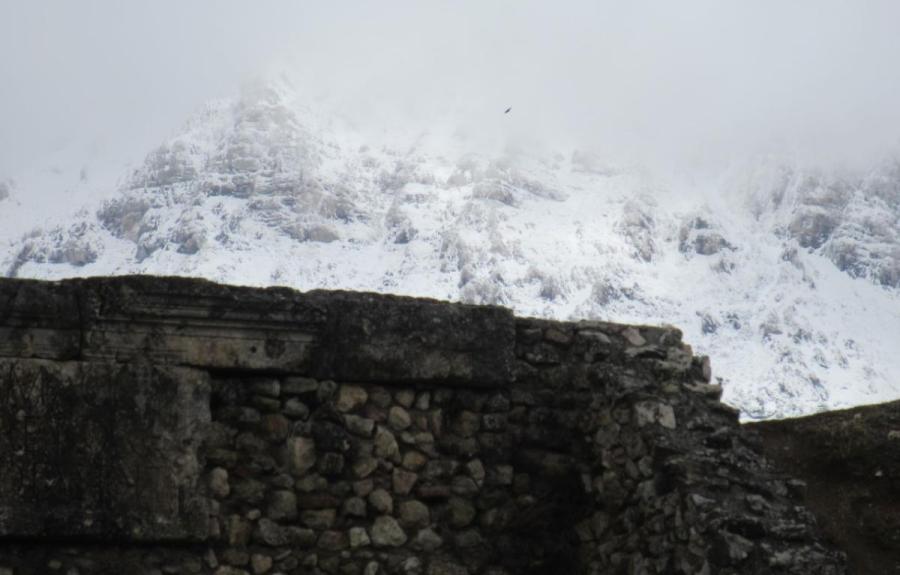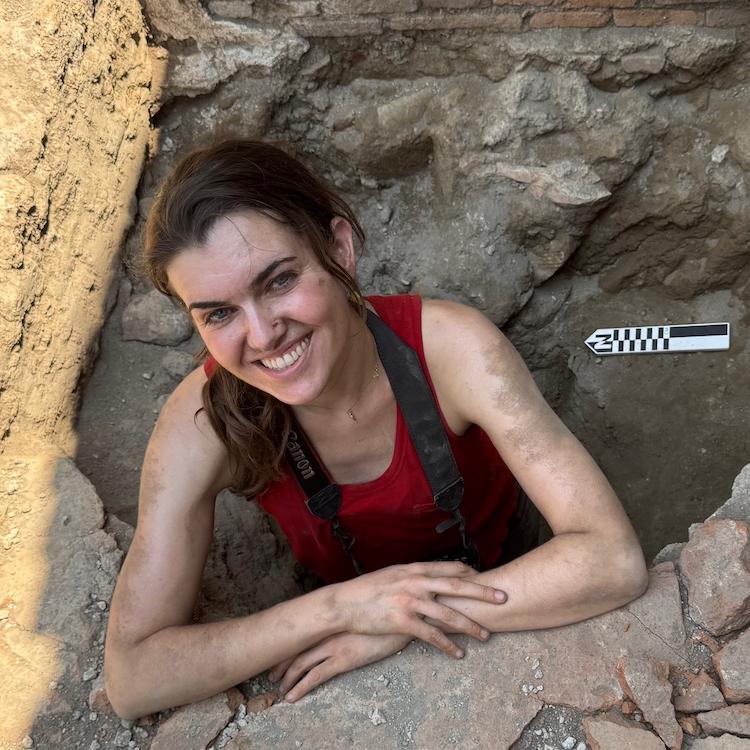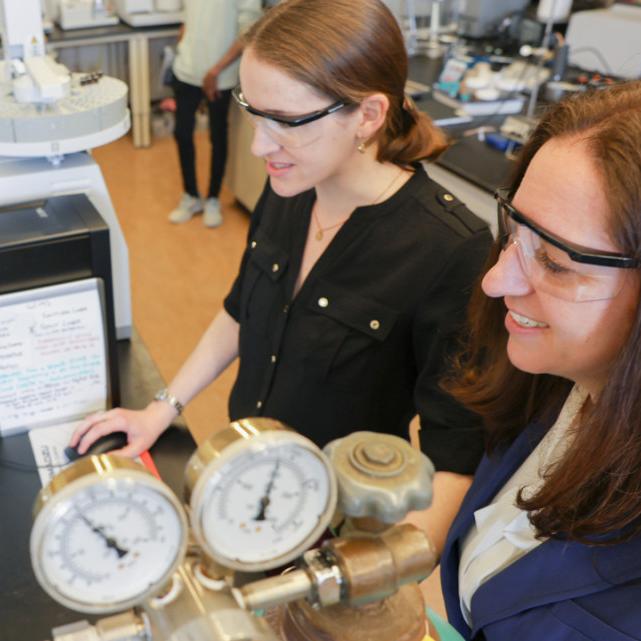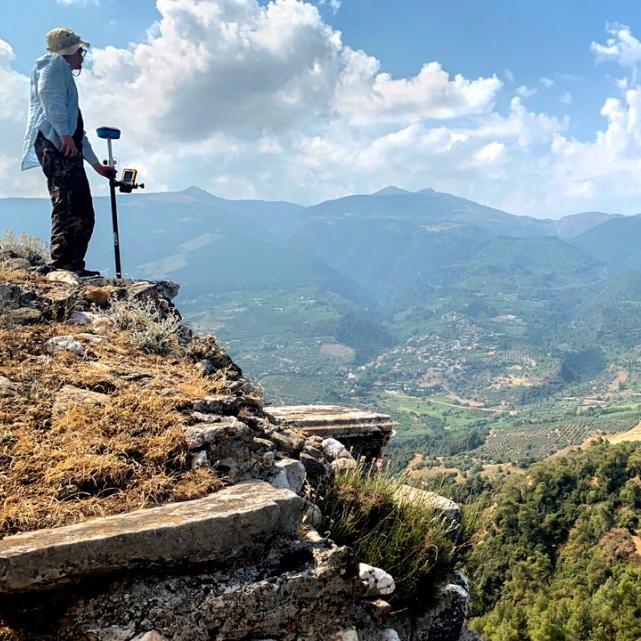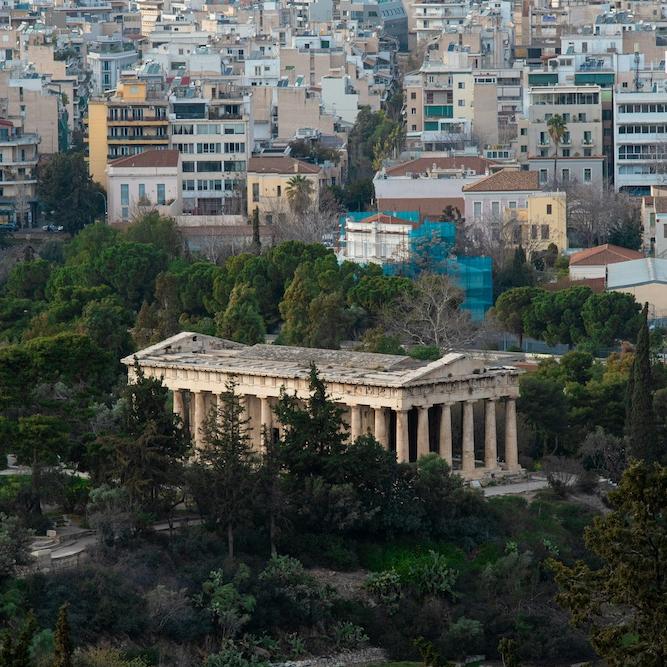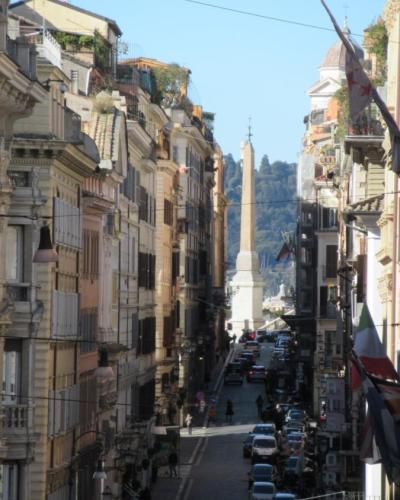Two undergraduate students from Cornell Classics have made the city of Rome their classroom this spring semester: Charlee Mandy, a third-year double majoring in Archaeology and Classics, and Lal Kosematoglu, a third-year majoring in Classics and minoring in Creative Writing.
The Centro Study Abroad program offers students an intimate view of Rome and its history. Professor Astrid Van Oyen, currently the Director of Undergraduate Studies for Classics, says, “The Centro is the foremost study abroad program in Classics, and we always encourage our students to apply. It’s a tremendous opportunity to gain first-hand experience with Roman art and archaeology, to foster a collective with other American classicists, and to be immersed in all that Italy has to offer.”
Charlee and Lal were kind enough to take a short break from their studies to share some of their highlights from the program so far. More photos and updates can be found on the Centro Instagram page (@thecentrorome), which Charlee co-curates as a social media ambassador.
What inspired you to spend this time studying abroad in Rome?
(CHARLEE) I have always wanted to study abroad, ever since knowing it was a viable option at Cornell. All of my most fulfilling and interesting engagement with the ancient world has been in attempts to reconstruct the daily life of people, on the streets and in their homes. To spend time living in Rome myself, especially since the Centro revolves around learning ‘on site,’ seemed the perfect way to embed my studies in the topography and experience of place. To learn in context is such a privilege.
(LAL) Before I even began my first semester at Cornell, I had it in my mind that I wanted to study abroad in Rome. I arrived at Cornell as a questioning pre-med Biology major and quickly realized that Classics was the right major for me. At that point, it made sense to go to Rome, where I could study the material heritage of ancient Roman history surrounded by peers with similar interests.
What has been your favorite part about studying abroad in Rome so far?
(LAL) Definitely, the liberal arts environment. Being surrounded by students who share my interests and have chosen to dedicate their time to this somewhat niche subject is amazing. Another thing has been interacting with the material remains of antiquity. I grew up in Turkey, where material culture is also very much integrated with the cities and the urban experience, but Rome is on another level. It was really interesting seeing and studying the conservation of material culture as a part of the urban fabric.
(CHARLEE) My favorite part about studying abroad in Rome has been two-fold. First, it has encouraged me to embrace discomfort – I know a bit of Italian from two semesters at Cornell, but being thrown into fast-paced settings where I’m trying to navigate or order food has forced me to be okay making mistakes. I’m still plucking up the courage to venture further out into the city and explore, because there is so much to see and the months are already flying by; practically every corner you turn around, you see something marvelous. Second, it’s just amazing learning from and with so many other people who are excited about Classics – people who will totally understand why I’m nerding out about a tiny kitchen shrine, or who will puzzle through an inscription on a triumphal arch, or who will stage spirited evening debates about Etruscan origins. I could travel or live in Rome by myself, but in no other time or place could I enjoy the opportunity to learn from experts in situ or observe in my friends the incredible diversity of interests in the ancient world. It’s an intense experience, but it’s well worth it.
How has this experience deepened your knowledge and appreciation of the ancient world in perhaps different ways from your experience studying at Cornell?
(CHARLEE) I think something that the experience of living and learning in Rome has impressed upon me (which I couldn’t truly grasp from textbooks) is just how delightfully, frustratingly messy the urban material record is. Trying to interpret the topography of a city like Rome is like trying to read a letter from a thousand hands all writing on top of each other. And yet, an interesting specific realization I’ve had is the surprising continuity of religious spaces over time– that a place that once had an archaic mudbrick sanctuary was then built over with a Republican temple, which was then reconstructed and faced in marble during the imperial period, and then converted into a church that’s still in use. Generally, the challenge of trying to learn about the ancient world in a modern city is exciting and eye-opening. I’ve been able to employ a lot of what I have learned studying at Cornell in unexpected ways.
(LAL) This experience has given me hands-on experience that I would not have been able to obtain at Cornell. I could read a great number of texts on the sites that we visit, but it would not teach me to view them the way experiencing them in person does. One of the essential skills they are teaching us at the Centro is how to look at these sites, knowing what to search for, and reading what the material remains can tell us about the period, their potential uses, or occupants. We approach the sites with a modern perspective and are constantly reminded not to let our biases affect our interpretation of the material. We can only obtain this type of experience by visiting the sites in person under the guidance of our excellent professors.
What do you hope to bring back to Cornell from your experiences studying abroad in Rome?
(LAL) One thing that is consistently emphasized in the Ancient city course, particularly that I want to remember in every field that I study, is the importance of perspective. Our reconstructions of sites, objects, their uses, and owners are all based on a modern point of view and inspired by the sociopolitical trends of the time. An imperial text may have a different take on what they define as a Roman colony as we do today. Similarly, our concept of how a room in a villa must be used may be based on our 21st century daily habits and expectations. We must always consider how our perspective impacts our interpretations and beware of biases.
(CHARLEE) I hope to bring back to Cornell a more particular sense of what I am interested in investigating in my own research. We are getting such a comprehensive, layer-by-layer view of the city and its inhabitants; I have a feeling the experience will remain a source of inspiration for a long time.
What are you looking forward to during the rest of your time in Rome?
(CHARLEE) I’m looking forward to getting better at ‘reading’ sites – what periods of time and function are legible, what I can interpret from where they are and who might have used them – something that we always practice doing when we’re out and about in the city and beyond. I’m also really looking forward to visiting the ‘Monte Testaccio’ of broken amphorae in Rome in a few weeks, and to our next two field trips, especially to see Herculaneum and the Collegium of the Augustales (which I’m doing a presentation on).
(LAL) I am really looking forward to the rest of the sites we have to visit! The course has been progressing chronologically, so we have not quite gotten to the tourist trap sites yet. I want to learn about the Bernini and Caravaggio works to give my parents a good tour when they come visit me.
Thank you for sharing your reflections, Charlee and Lal! We look forward to welcoming you back to Cornell in the fall and hearing even more about your experiences studying abroad in Rome.

